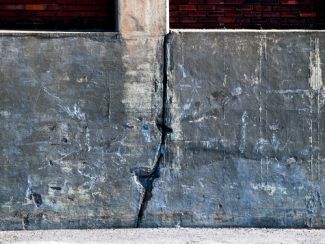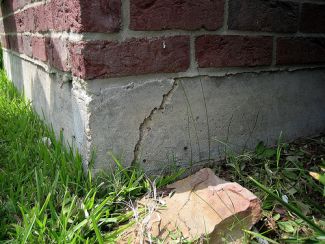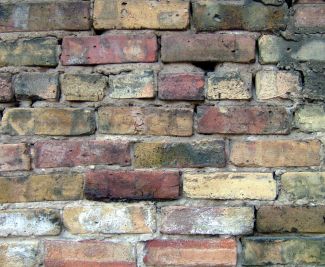Foundation Damage
How to spot problems in your foundation
It is a good idea to check your house for foundation damage at least once per year. Foundation problems can be difficult to fix and can be signs of major structural damage to your home, so early detection is key.
Signs of Foundation Movement

- Are your door and window frames no longer at right angles, making them difficult to open and close?
- Are your floors sloping?
- Do you see nails working their way out of your sheetrock walls, or are there new wall cracks appearing?
- Do you have a leaking roof, even though your roofing material is new?
Foundation Cracks
Additionally, examine your interior and exterior foundation walls, looking for cracks. Take note of what the cracks look like. This can tell you a lot about the source of the problem. Pay particular attention to foundation cracks that look like they have been repaired several times, which could signal persistent problems in your foundation.
Vertical foundation cracks are often caused by your basement settling unevenly. If a crack in a wall continues along the floor, it could be related to the footing below your basement. This could signal a serious issue, since the foundation wall and all of the structure above is supported by that section of footing.
Additionally, look for places where your foundation may have shifted downward, leaving a gap between the foundation and your house's frame. This is another sign that one of the concrete footers below your foundation has sunk or become damaged.
These days, most foundations are built with poured concrete or with cement blocks, also known as concrete masonry units (CMUs). In poured concrete, small shrinkage cracks can take place naturally, since concrete shrinks when it initially sets. They can be vertical or random in shape; tiny ones are often less serious in nature.
Horizontal cracks in any type of foundation indicate the presence of serious issues. They can be signs of pressure from the outside being exerted on your wall, possibly from saturated soil near your foundation or from freezing and thawing soil (see our article on roof and soil drainage tips). Look for clues that may explain these horizontal cracks. For example, if there is a driveway near your foundation, has pressure from a car placed significant pressure on your exterior basement wall? 
If you have a cement block foundation, look for any sign of damage to the bond courses in your exterior foundation walls. A bond course is a solid mortar filled cavity with rebar inside, and several of them typically run throughout cement block foundation walls. They act as a series of structural bands to support the wall. The top of the foundation wall is typically a solid 'bond beam', made of mortar with rebar inside, holding embedded anchor bolts for attaching the wood structure to the foundation. If either the bond courses or the bond beam are cracked, your walls are seriously damaged and may be at risk of collapse. You should have a professional inspect them immediately.
In a stone foundation, damage does not typically occur from the stones themselves cracking. Rather, the wall can become cracked or bulge inward from outside pressure on the wall and from freezing and thawing soil. Additionally, damage can result from a stone wall being weakened when individual stones are removed to create openings for windows, doors, or pipes.
Brick foundations are relatively uncommon, but if you have one, or have brick walls, check them for loose or damaged bricks. Also, check the strength of the mortar. Poke at it - is it still holding well? Keep in mind that gaps or cracks in brick walls provide space for water to get into your wall, further weakening it, especially when the water freezes and expands. Cracks in brick walls are often due to building movement or insufficient support. Treat cracks in brick walls as very serious, and have an expert inspect them right away, especially if the wall has become bulged.
Check Other Foundations on Your Property
 Inspect the foundations of other structures on your property, such as a detached garage. In stand-alone garages, the horizontal cement slab will often settle from the combination of its own weight, along with that of the vehicles on top of it. This places downward pressure on the dirt below the slab, which then pushes outward on the garage foundation walls. Look for horizontal cracks in the foundation walls as a sign of damage caused by settling.
Inspect the foundations of other structures on your property, such as a detached garage. In stand-alone garages, the horizontal cement slab will often settle from the combination of its own weight, along with that of the vehicles on top of it. This places downward pressure on the dirt below the slab, which then pushes outward on the garage foundation walls. Look for horizontal cracks in the foundation walls as a sign of damage caused by settling.
If you find signs of damage to your foundation, contact a foundation expert immediately to help you diagnose the extent of the damage and to help you repair it. In addition to addressing any potential structural problems, it is important to repair any cracks that could allow water into your house.
Image source: waytru
 The Foundation Damage by Water Damage Defense, is licensed under a Creative Commons Attribution-ShareAlike 3.0 Unported License.
The Foundation Damage by Water Damage Defense, is licensed under a Creative Commons Attribution-ShareAlike 3.0 Unported License.
